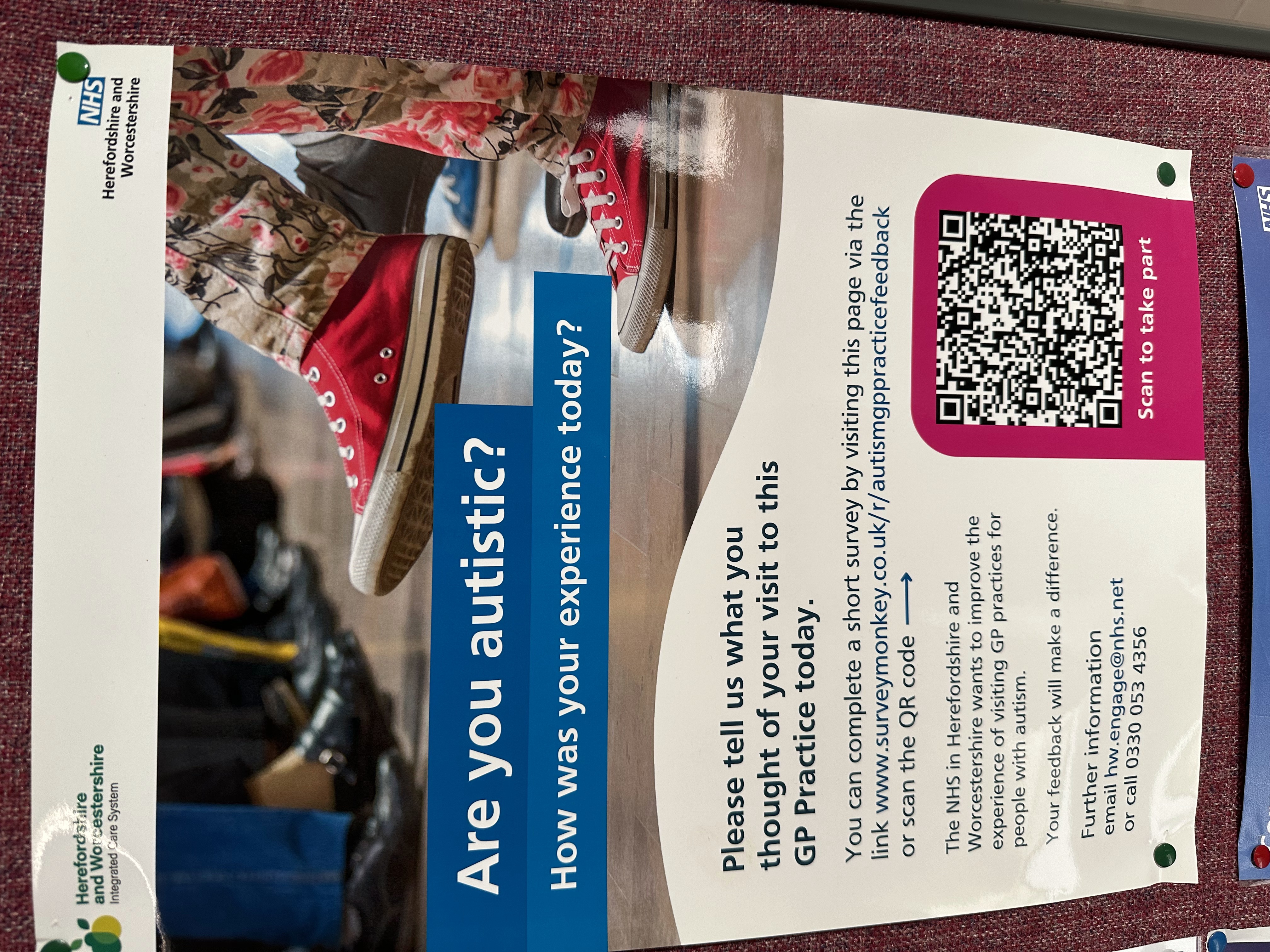In today’s digital world, QR codes are fast becoming an invaluable tool across all sectors, including healthcare. For doctor’s surgeries, they present a unique opportunity to streamline operations, enhance patient engagement, and provide valuable information—all with a simple scan. Here’s how QR codes can be used to improve the patient experience in your waiting room.

1. Streamline Check-Ins and Reduce Wait Times
Quick Check-In Options: QR codes can be placed at the entrance of your surgery, allowing patients to check in via their mobile phones rather than waiting at reception. This reduces crowding at the front desk and helps patients settle in faster.
Automated Queue Updates: Link QR codes to an automated queue management system, allowing patients to see their estimated wait time and avoid unnecessary stress or frustration. This is particularly useful in busy practices.
2. Provide Health Information and Resources
Access to Informative Videos: Waiting rooms can be a great place for patients to access important health information. QR codes on posters or display screens can link to videos about common health topics, such as managing chronic conditions, preventive care, or mental well-being.
Preventative Care and Seasonal Advice: QR codes can provide seasonal tips, such as flu prevention strategies or allergy advice, and link to trusted NHS resources. This not only informs patients but also positions your practice as proactive and patient-centred.
3. Make Appointment Scheduling Easier
Instant Access to Online Booking: Place QR codes throughout the waiting area to give patients easy access to your online booking system. This allows them to book follow-up appointments or screenings while they wait, reducing the likelihood of missed appointments and making life easier for your staff.
Encourage Use of Virtual Consultations: For patients interested in virtual consultations, a QR code linked to information on telehealth services is a great way to promote these options. Patients can learn about how online consultations work and whether they’re eligible, making the service more accessible.
4. Enhance Patient Feedback Collection
Quick Feedback Forms: Gathering patient feedback is essential for improving your services. QR codes can link directly to feedback forms where patients can share their experience while it’s still fresh in their minds. This can be especially valuable for gathering insights on your waiting room experience, staff interactions, and overall satisfaction.
Anonymous Suggestions Box: For patients who prefer to give feedback anonymously, a QR code can lead to a secure, anonymous survey. This encourages honest feedback and helps you identify areas for improvement.
5. Promote Patient Portals and Digital Resources
Easy Access to Patient Portals: Patient portals are invaluable for managing medical records, test results, and communication with the surgery. However, many patients remain unaware of their benefits. QR codes can link directly to the patient portal login page or an instructional video on how to use it, boosting adoption and simplifying communication.
Educational Materials on Managing Conditions: QR codes can provide access to downloadable guides, videos, and articles on managing chronic conditions, such as diabetes or hypertension. Patients can scan the code and review the materials at their convenience, empowering them with knowledge for better self-care.
6. Facilitate Prescription Refills
Quick Links to Repeat Prescription Services: Many patients come in just to manage prescription refills. Placing a QR code that links directly to your online prescription service saves patients a trip to the front desk and reduces administrative load. Patients can scan the code and fill out a simple form to request refills, streamlining the entire process.
7. Improve Accessibility and Multilingual Support
Information in Multiple Languages: For surgeries serving diverse communities, QR codes can be used to provide health information in multiple languages. Patients can select their language preference with a simple scan, making healthcare information more inclusive.
Accessibility for the Visually Impaired: QR codes can link to audio content, such as recorded instructions, for patients who are visually impaired or prefer listening over reading. This small touch can make a significant difference in accessibility.
8. Advertise Support Groups and Local Health Events
Encourage Community Involvement: Link QR codes to information about local support groups, fitness classes, or health screenings. Patients may be more inclined to join local health initiatives if they have immediate access to relevant information, fostering a sense of community and proactive health management.
Promote Upcoming Clinics and Vaccination Drives: QR codes can provide information on seasonal vaccination clinics, wellness checks, or other health events. Patients can instantly learn more and book their slots, increasing attendance and ensuring wider health coverage.
Why QR Codes in Waiting Rooms Are a Win-Win
QR codes offer an easy, non-intrusive way to engage patients while they wait. They allow surgeries to distribute important information without cluttering the waiting room with printed materials or relying heavily on front-desk staff. For patients, QR codes make it convenient to access personalised healthcare information, manage appointments, and learn more about self-care options.
By implementing QR codes in your waiting room, you’re not only improving patient experience but also streamlining your operations. Start today by designing a simple and engaging QR code system that meets your surgery’s unique needs, and watch as both patient satisfaction and operational efficiency improve.
QR codes are the perfect solution for any practice looking to modernise its patient experience. Visit QR2U.net to learn more about how QR codes can enhance your waiting room and streamline your practice.


